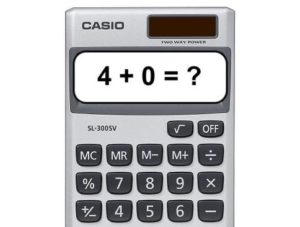
Should Calculators Be Allowed in Math Class?
Do they improve the classroom experience or interfere with learning? Here’s how to decide if calculators should be allowed in your math class.

Over the past few weeks, we focused on Data-Driven Instruction: how to use data gathered over an extended period of time to form a detailed picture of each student’s achievements and needs. I’ve gotten a lot of feedback from teachers curious about ways to “dip their toes” into data collection or how to incorporate data into a more traditional classroom structure, so let’s look at one strategy for using Just-in-time Data to make lectures more responsive and interactive.
When we deliver information to our classes via lecture, we often wonder how much they are ‘picking up what we’re putting down.’ Typically, we find out how well a student has understood (and retained) information when they complete a graded assessment. But when the assessment comes days or weeks later, it can be hard to tell whether a student’s difficulties come from attention, comprehension, or retention. Also, finding out days later that a student (or group of students) has missed something is not nearly as useful as knowing in-the-moment.
Experienced teachers can “get a feel for the room” to tell whether a lecture is having an impact. This helps when a large portion of the class is lost, but it is very difficult to identify that the student in the middle of the third row started wandering off 7 minutes into the period. Another challenge is what Jennifer Gonzalez refers to in her blog (Cult of Pedagogy) as “fisheye”: a form of bias, where we tend to focus in on the students who are actively engaged and estimate the engagement and comprehension of the entire class based on a few students.
Get the support you need to bring personalized learning to your school:
Enroll in “Differentiate Your Math Class with Khan Academy”
Watch this free video tutorial on Khan Academy Basics
Contact me to schedule a consultation
There are plenty of low-tech ways to make real-time assessments (“touch your left ear if you think the answer is 14”), but using Socrative to deliver a ‘Quiz’ or ‘Quick Question’ can be a great way to gather objective data mid-lecture or mid-activity. Socrative meets all my basic standards for an amazing teacher tool (Free, Intuitive, Stable, and Useful), so I would recommend visiting their site to look around and watch the two-and-a-half minute intro video.
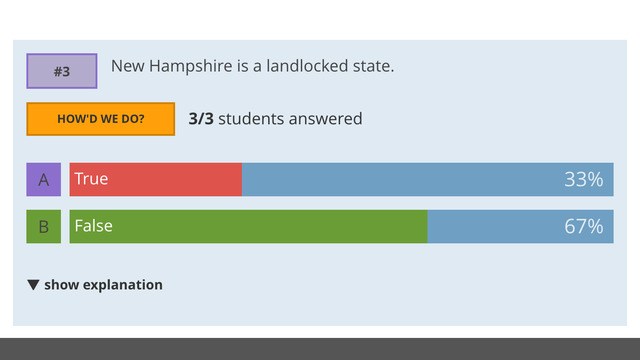
If you select “Teacher Login” from the main screen, sign-in with Google, and name your “room,” students can login simply by clicking “student login” and entering the room name. To respond to a quiz or survey, there are no passwords to remember, and students (or workshop participants) can be answering questions in seconds, even the first time they use it. There are some games and advanced features, but I mainly use the basic functions: straightforward open response and multiple choice questions.
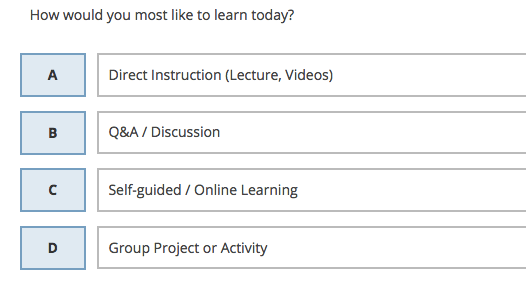
You can ask subjective questions before a lesson to gauge the interests and background of your class, and use this information to guide the direction of the lesson. You can also stop periodically to check for understanding with objective questions. This practice tells us whether to speed up, slow down, or repeat something. To see an example of a quiz I recently used as a pre-survey for a Gamified Learning workshop, login to Socrative as a student, using Room Code “EdTechJeff.” As Socrative is designed for real-time assessments, though, you will only be able to access it until I (as the teacher) ‘end’ the quiz or start another assignment.
Google forms has some similarities to Socrative, but is designed to create assessments or surveys that can be completed any time. In a previous post and screencast I covered how to create self-grading quizzes using Google Forms and Flubaroo, but Google Forms can be used for gathering and organizing any type of response data. I’ve used it for quizzes, surveys (of students, parents, or coworkers), exit tickets, class elections and more.
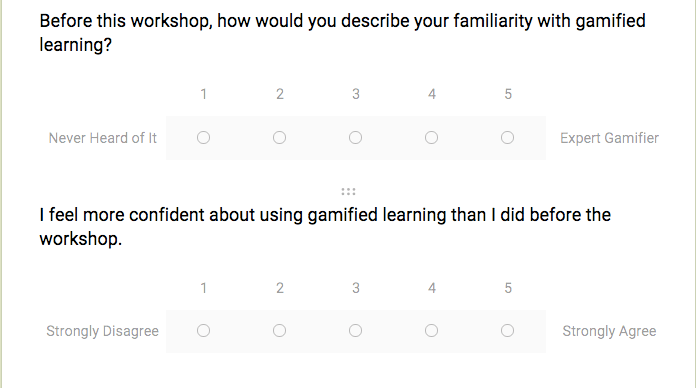
GoogleForms is an extremely versatile tool, and once you become proficient in its many features, you will likely discover many more tasks it can help you accomplish. Recently, while delivering a presentation on Gamified Learning at the Educating Boys Conference (sponsored by NYSAIS and IBSC), I asked participants to complete two Google Forms: one a template to help them create a Gamified Learning Implementation Plan, and the other a workshop evaluation.
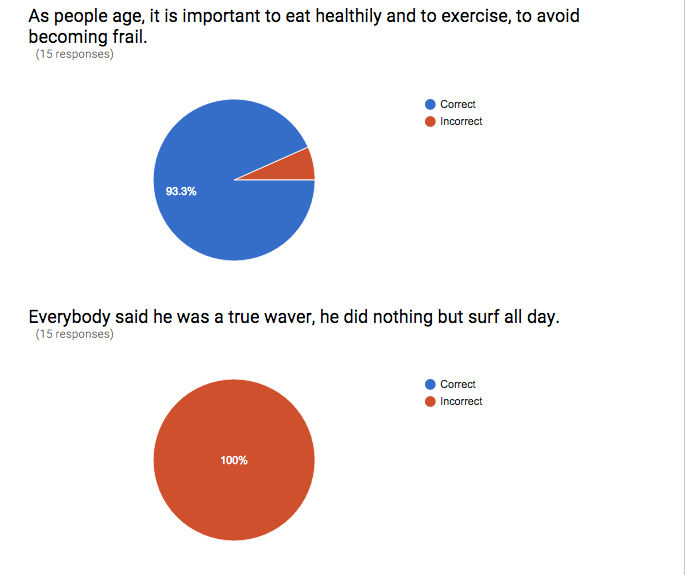
Both Socrative and Google Forms offer real-time visualizations that will help you get an overview of class understanding in-the-moment, and both will store data for you to look at in more detail after-the-fact. I find GoogleForms to provide more options in terms of layout, types of questions, and other features. Generally, if you want students to respond to something simultaneously in-class, use Socrative. Any time you want people to answer on their own schedule, choose GoogleForms, which also offers more features and flexible ways to use the data you gather.
I’d love to hear your success stories of incorporating formative assessments into lecture-based classes. Feel free to ask any questions you might have, or even share difficulties you’ve encountered with these tools or strategies by getting in touch.

Do they improve the classroom experience or interfere with learning? Here’s how to decide if calculators should be allowed in your math class.

See the animated visual models my students made, and follow in my footsteps as I plan and facilitate a project-based math unit.

Collaboration and active learning are just two signs of a student-centered classroom. How many of these six signs are present in your classroom?